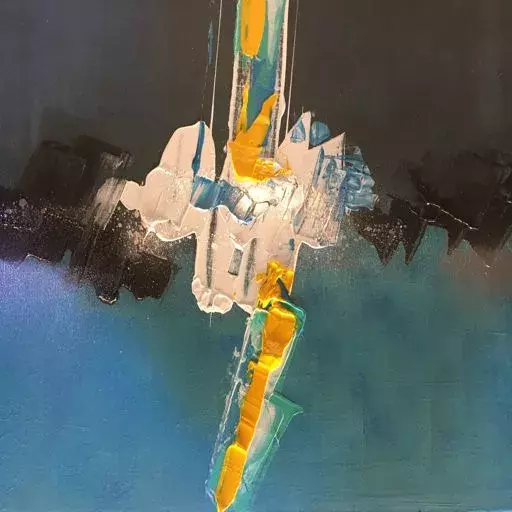Hello all, I am considering on getting a 3D printer. I want to print some stuff for a project. I am relatively new to this. I need the slicer software to be compatible (preferably open source) with linux since that’s what I am using. I have only found the stuff from Prusa to be compatible but they are expensive. I have heard of ender 3 but it is the only os printer by creality and saw the repo is 3yo without updates.
Can I get some suggestions?
Your OS doesn’t matter. Printers are dumb and only understand Gcode, which is basically a series of steps to follow for printing your part (move the head this amount in that direction while extruding that much etc.). Producing that code is the slicer’s job. What you want is a slicer that works perfectly on Linux. And good news, all open-source slicers work perfectly on Linux. What you need tho is a slicer that includes your printer’s profile.
Try Cura or Prusaslicer (available as Flatpaks) or Orcaslicer (Appimage for now but will move to Flatpak eventually).
You don’t even need a Slicer that offers a profile for the printer. I have an obscure one and had to make a custom profile, but it works fine.
I personally would recommend Cura over Prusa. They both do the same and copy each other all the time, but Cura is simpler by default imo.
had to make a custom profile, but it works fine.
Yes, for a person with a bit of experience that is an easy task.
It’s a bit more daunting for a newbie who is asking the sort of basic questions OP is doing
The printer doesn’t really matter. The slicer is what is os specific and most any slicer will work with Linux these days. It’s easier if you find a slicer with a premade profile for your printer but not a big deal. I’ve used prusa slicer for years with my printers (creality, voron, biqu, elegoo). Find a printer that’s in your budget and meets your needs then see what slicers have a profile for that. For modern printers klipper is a big plus. I just got a kobra 3 and it’s a decent machine. My ender 5 has been a workhorse but there are better printers these days. I don’t know enough about bamboo labs but they seem to be the new fad (well… sorta new now).
The printer is more or less separate from your PC. As several others have pointed out, you need the slicer software to create, using your PC, the file that you feed into your printer. What software your printer is running makes no difference.
And to highlight, you don’t need to use a specific company’s slicer with your printer. Lots of people use PrusaSlicer with Creality printers.
Most slicer software is cross platform, free and open source. The biggest ones are PrusaSlicer, Cura and OrcaSlicer. You can use all of these with lots of different brands of printers. Creality’s own slicer used to just be a slightly modified version of Cura (Not sure if their new “Creality Print” software is, but it doesn’t matter, you’re rarely tied to any specific software, at least with FDM printers). Bambu Lab Studio is not available for Linux, but OrcaSlicer is, and as far as I know it’s just an open source community edition of Studio.
In other words, you’ll have plenty of options on Linux.
Get whatever printer fits your budget and needs. You don’t have to have a prusa printer to use prusa slicer, and even if you don’t want to use prusa slicer; Cura, super slicer, and orca slicer all work on Linux natively as well. You shouldn’t have a problem with slicing software at all.
Also, as a tip, whatever printer you buy probably comes with an installer for a proprietary fork of (an old version of) one of the main slicers. Skip it. Go download Cura or prusa slicer and there will likely be profiles available during initial setup for your exact printer. Definitely if you stick to the bigger, well-known brands.
I have a prusa mk3 that I recently upgraded to mk4. They are expensive, but they are also super-reliable, they have great customer support, and they fully support 3rd party components. Not to mention the upgrades. After 3+ years as a mk3, the upgrade cost me about 700 EUR and it was like getting a new printer with modern specs.
You will save money in the long run, and a ton of nerves. Even if you are just looking to use it for a limited period of time, the resale value will be good.
I think Prusa has rested on their laurels for a few years too long. There is no way they’re worth $1k for a bed slinger when literally every comparable option is far less than half the price. Now they’re priced equivalent to stuff like the P1S or X1C without AMS even though they’re using the same construction and technology as a $150 Ender printer. CoreXY is such a major improvement that it’s not even funny.
I do appreciate the community they’ve created but the company seems to think it’s still in the 3D printer market of 2018.
Buy a bambu a1 mini, their slicer (based on prusaslicer) works great on linux and their printers are really easy to use, have good print quality and print fast.
^ if you want to print instead of thinkering with your printer
Bambu labs all the way. Unless you want your hobby to become printer maintenance.
Also unless you want to work in multiple colours and not have a giant pile of printer poop waste.
The amount of filament Bambu wastes is ridiculous.
I think I’m wasting a lot less filament color switching with my new X1C than I ever did with all the failed prints on my old Sidewinder X2. Nothing like checking an 18 hour print at hour 17 and finding that a corner lifted or a support toppled over from all the movement.
It’s not as much as you might think, plus you have to purge to switch filaments with a single nozzle design. I would argue my Bambu saves filament on the balance because print failure is so low.
What volume of print area do you need? Any specific filament types you want to use? What sort of budget? Do you want something that just works or are you fine with tinkering?
Hardware
I mentioned in another topic that prusas solid machines, yeah they’re pricey, kits are cheaper than assembled and because they’re easy to service, I wouldn’t even hesitate at grabbing a second hand one.
A lot of really good responses, there’s a ton you can choose from there, however I’m going to suggest looking into a voron v0.2 kit as an option, it’s totally open source and you own your hardware, I self sourced my v2.4 but I’ve seen decent reviews of the formbot kits, they’re up to date with the voron project and look to include some mods in the kit as well, the v0.2 with everything you need to put together and a dragon HF hotend is just under $500 USD, the v0.2 is a 120x120x120 printer and is totally capable of printing abs (in fact all of the voron printers can have their parts printed on it afaik) they also have trident and v2 kits but they’re twice the price for the larger kits. Another option would be to source a kit from a local supplier, will be a bit more expensive generally though.
I’ve done both, my first printer was a Mendelmax 2 kit that I had to sell unfortunately when I moved cross country, learned a lot building it so I bought a preassembled prusa as my next one. If diy and modding is your thing I 100% recommend building a kit, and even if tinkering isn’t your thing you’ll learn a lot about how they work by building one, but also totally get the need for something that’s capable out of the box.
Software
I use SuperSlicer heavily, Ellis provides a great tuning guide and superslicer profiles for vorons, but overall I like it, it’s a fork of PrusaSlicer which is itself based on Slic3r which has been around forever. I think SuperSlicer and PrusaSlicer are on flathub, but they also provide appimages. SuperSlicer has a ton of settings, PrusaSlicer has some really nice features and out of the box printer and filament profiles, also a measuring tool which is nice. I like the interface better on SuperSlicer and it has some tuning tools built in.
I second the formbot voron 0.2 kit, it was my first printer and it was a great experience. I have had a lot of heat creep issues with the dragon hf hotend though, I’d probably recommend the standard one instead. Other than that it’s been much less required tinkering than I was led to believe. It generally just works.
Oh yeah the HF has a bit of heat creep, just swapped my franken-prusa to a noctua 24v hotend fan and it seems better, I’ve also found it super filament specific. I also dropped the plate temps as PLA was unhappy in the enclosure with the summer heat, had to do a rebuild and found the tube going into the extruder wasn’t flush up and some PLA had blobbed into the void.
I like the dragon specifically because it’s fixed in places, I’ve totally had self induced issues with a v6 hotend which prompted me to look into it in the first place, also was component compatible. I like the uhf a lot on my v2.4, I don’t push my printers to their limits but I’m pretty happy with what it can put out with a 24mm3/s profile with a standard 0.4 mm nozzle, it’s really nice with a 0.6 mm as well.
Yeah that was my experience with the v2, I tinker with it because I can’t help myself, but it’s been a rock solid experience once I got it dialed in (which I would expect to do with any printer). They’re also popular and well documented so there’s a lot of information out there. Klipper is also amazing, my experience with it and the v2 was what prompted me to klipperise my prusa in the first place.
Since you asked, I really don’t have any issue as long as it is no smaller than roughly 15cm in one direction.
Edit: will ofc look at the stuff you sent. Replying quickly since I am doing sth rn : P Thank you!!!
Mm yeah the v0.2 is just a bit too small then, only 12cm in each direction. You can check out their other kits, I have a v2, have heard great things about the trident, I’m currently thinking about building a 250x250 one or smaller, but they (the supplier I linked) don’t include printed parts for those kits, the guts are still there though if you go for one check out the voron print it forward program, they’re strict on who’s able to fulfill requests.
The Ender 3 is the printer I recommend new users get. It’s open source hardware and firmware, the devices can be found for as little as $20 sometimes. Bambu Studio, UltiMaker Cura, and PrusaSlicer, and probably loads more are all awesome slicer software that is compatible with a LARGE number of 3D printers.
Ender is a horrible introduction to printing far too much tinkering and manual calibration. Bambu A1 is the way to go now.
Orcaslicer runs on Linux which interfaces with almost every printer. It is a merge between Prusa and Bambu slicer
Bambu Labs is closed source but currently by far the best option for out of the box printing.
If you want open source consider the Sovol Sv08 but as a beginner this is a difficult start in the hobby. Or a Prusa printer.






